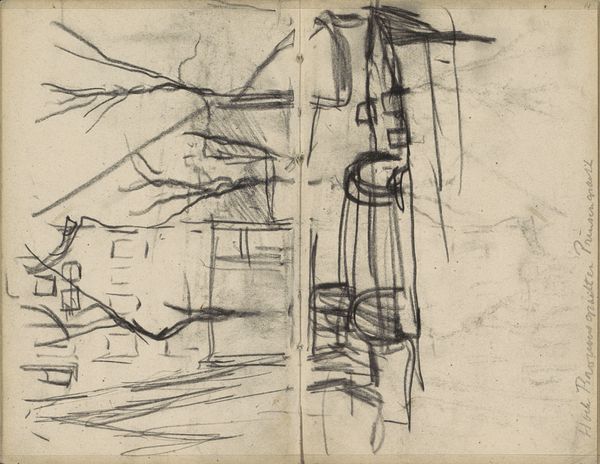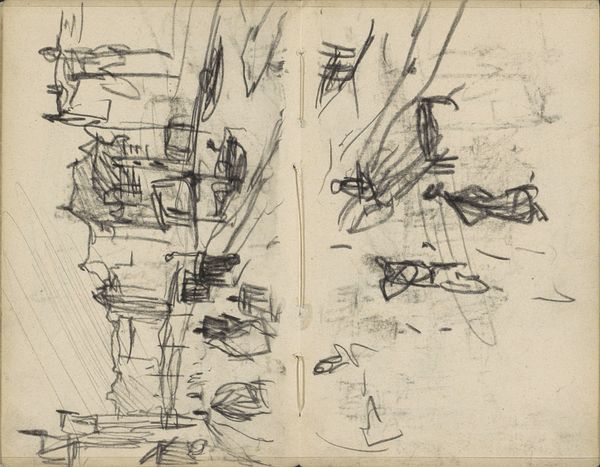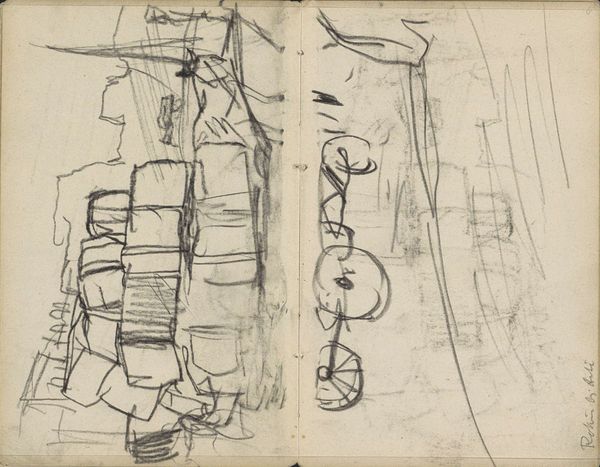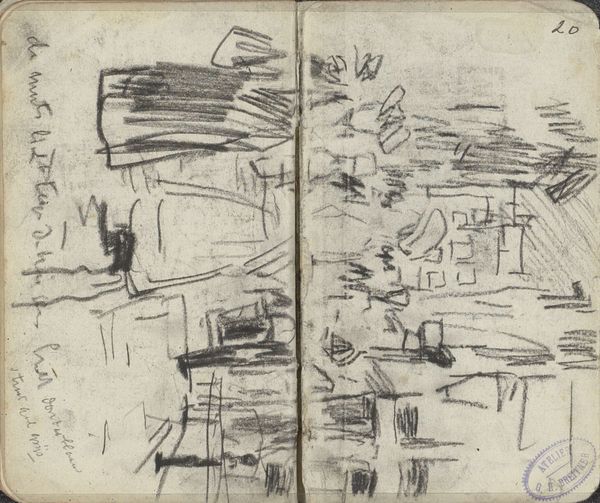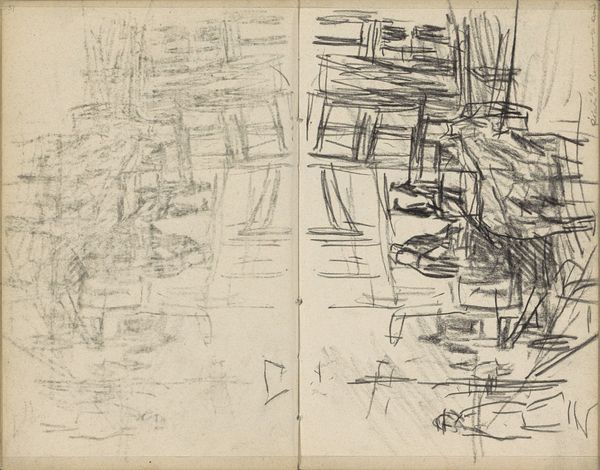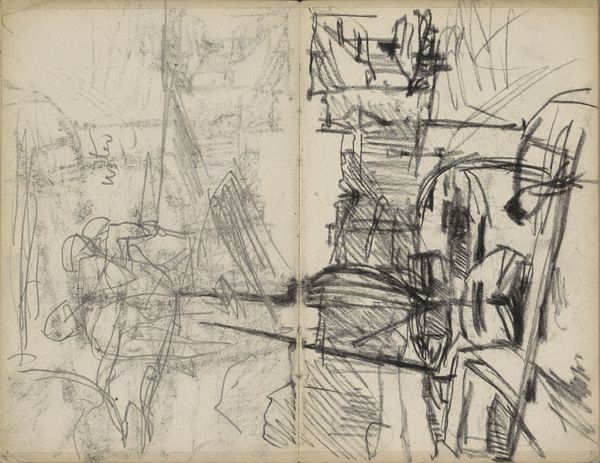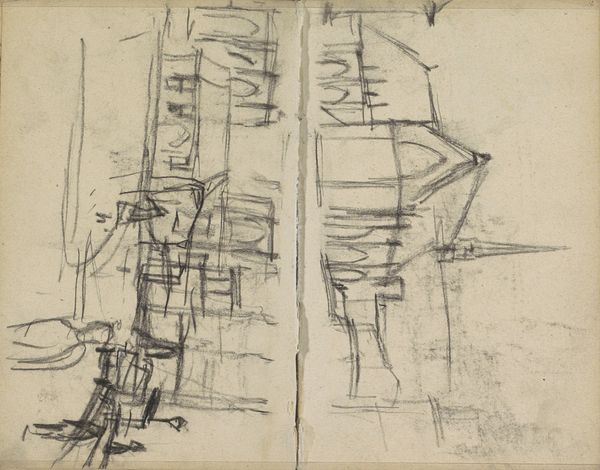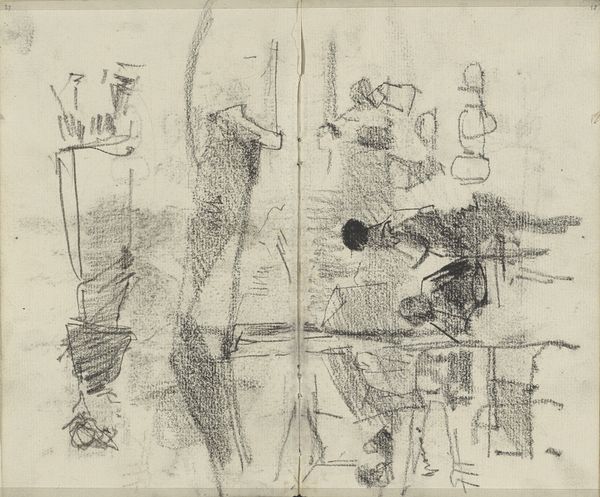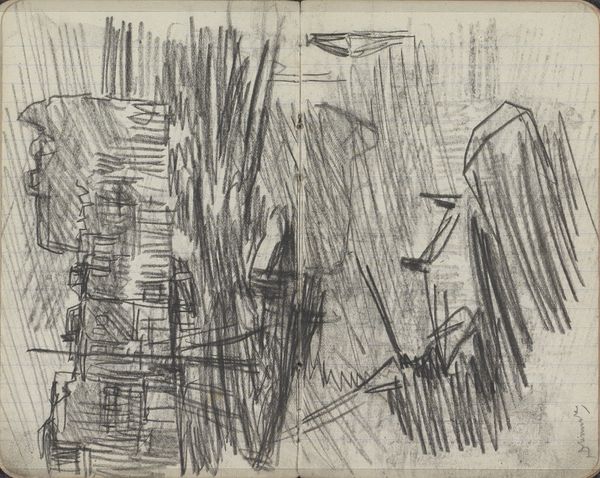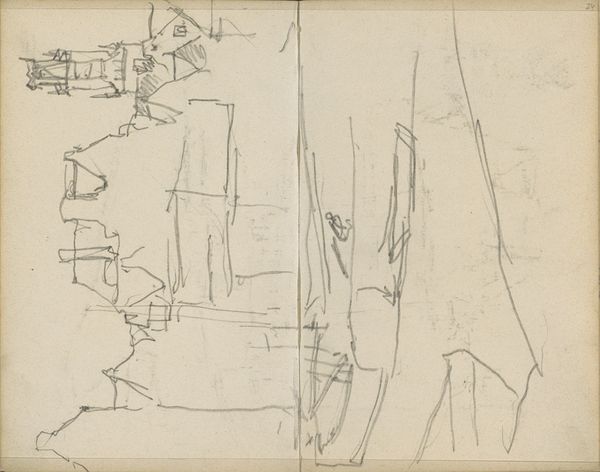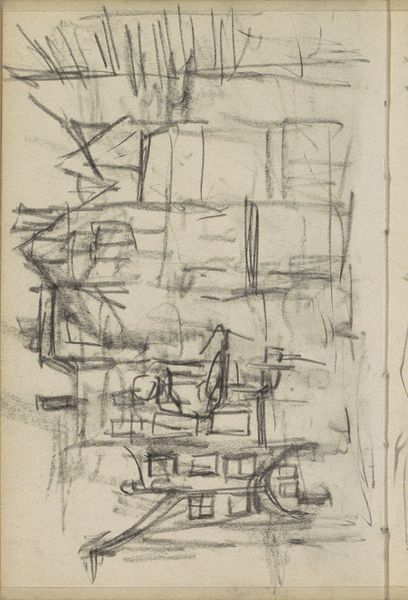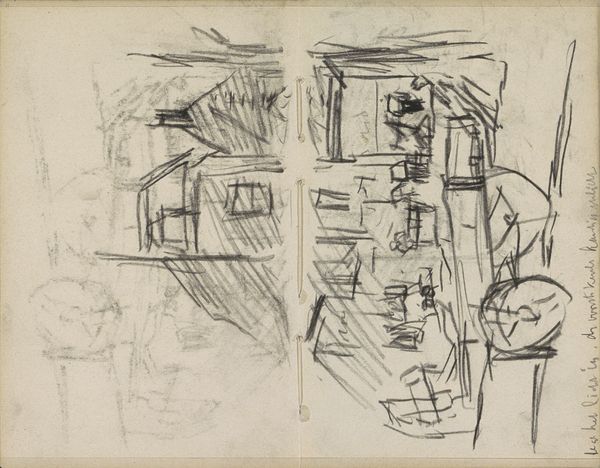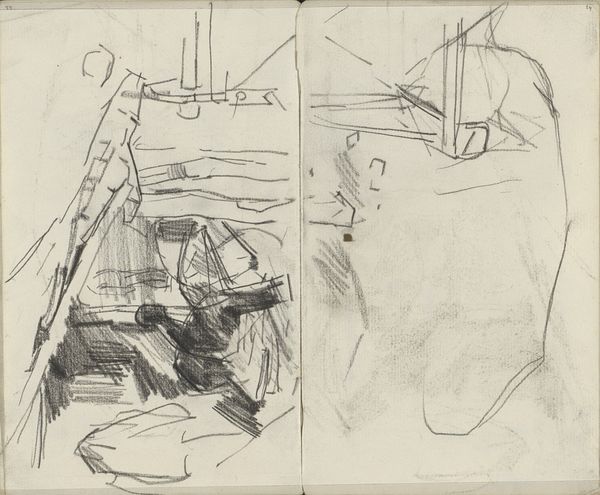
Gezicht op de sloop van panden aan de Sint Agnietenstraat te Amsterdam 1903
0:00
0:00
Copyright: Rijks Museum: Open Domain
Editor: So, this is George Hendrik Breitner's "View of the Demolition of Buildings in the Sint Agnietenstraat in Amsterdam," created in 1903. It's a drawing on paper, mostly pencil and ink. It's raw, you know? Unrefined. Makes me think about the impermanence of things. What do you see in this piece? Curator: The power of this seemingly simple sketch lies in its immediacy. Breitner captures not just a cityscape, but a moment of profound change. Demolition – what symbols resonate within that act? Not merely destruction, but erasure of history, a disruption of collective memory. What happens to the lives and stories that were contained within those walls? Editor: That's a good point. I was so focused on the roughness of the drawing, I missed that. The lives disrupted by demolition, a changing city. It gives it a kind of melancholy weight. Curator: Observe how Breitner uses stark lines against areas of empty space. What emotional effect do you think is intended by the juxtaposition of defined architectural remnants against those frantic, almost scribbled-out negative spaces, the white of the page itself? It's not merely about what’s being demolished, but perhaps *how* history is perceived, lost, and then reformed by each generation that witnesses, or even performs the demolition? Editor: So it is not only the physical space but a mental space too? The emotional response to losing familiar landmarks, even unpleasant ones? It’s about a deeper understanding of the cultural memory being dismantled? Curator: Precisely! This sketch embodies not only the urban renewal of Amsterdam but invites contemplation on the psychological effect of change. It challenges viewers to consider what is left behind and to interrogate who and what society chooses to remember, and by extension, what it actively forgets. Editor: This really offers much to reflect on, not just about this drawing but how we relate to the spaces around us. Thank you. Curator: My pleasure. These visual symbols urge us to seek echoes of our own emotional landscapes within history's grand narrative.
Comments
No comments
Be the first to comment and join the conversation on the ultimate creative platform.
